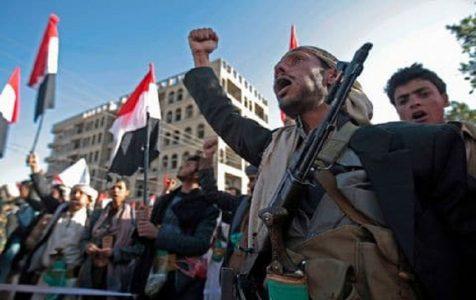
What is next for the jihadists in Yemen?
Yemen is becoming the world’s worst humanitarian crisis, according to the United Nations. The divisive and violent civil war allowed the resurgence of militant jihadist groups such as al-Qaeda in the Arabian Peninsula (AQAP) and the Islamic State, especially since the security and governance vacuum following the Saudi-led coalition’s intervention in 2015.
Over the past year, the United States and the United Arab Emirates have claimed several key counterterrorism victories against the Islamic State and AQAP. But those victories are more ambiguous than they appear at first look. My research illuminates that the specifics of the counterterrorism campaign and the broader impact of the war have empowered AQAP and other militant groups. Southern separatism, the ability of the Saudi-led coalition to control its proxies and power shifts within the internationally recognized government could all influence whether Yemen’s jihad groups continue to splinter or find common cause with disillusioned sectors of the population.
As the coalition campaign began, AQAP increased its numbers and war chest by staging a massive jailbreak, seizing military hardware and robbing the central bank. By April 2015, it had established a de facto state, which it ran out of Eastern Yemen. This continued for an entire year until UAE forces, with help from the United States, forced it to withdraw in April 2016.
Populations in Yemen’s east are well armed and difficult to terrorize into submission. The key to AQAP’s success was not direct recruitment. Even at its peak, its core fighters numbered no more than 4,000. Rather, AQAP worked to secure buy-in from key city and tribal leaders and to win passive toleration from local populations. As coalition bombs rained down in Yemen’s west, crippled by the Saudi naval blockade, AQAP’s territory looked like a haven of stability.
Unlike the Islamic State, AQAP decided on a gradualist approach to governance and struck a local power-sharing deal. AQAP rebranded itself with a local name “The Sons of Hadramawt,” organizing a notable program of community projects. Most of AQAP’s governance Twitter feed during 2016 was about hands-on development activities (like providing access to water and electricity), while only 3 percent was about implementation of Islamic law punishments.
AQAP financed its activities through oil imports and smuggling operations along Yemen’s porous eastern coastline. Ironically, AQAP benefited from the Saudi naval blockade, since this gave it a virtual monopoly over imports and generated an estimated $2 million a day. AQAP also taxed local companies with the stated aim of improving community services.
AQAP has been careful not to alienate local populations. When innocent tribesmen were accidentally killed in operations designed to target the Yemeni military, AQAP published apologies and negotiated to pay blood money. The eruption of war in 2015 gave AQAP the opportunity to align itself against the Houthis, whom it had long deemed infidel allies of Iran. AQAP recast southerners’ historical fears of a takeover by northerners as a sectarian battle of Sunnis vs. Shiites. Political disputes were reframed as religious, within a narrative of apocalyptic jihad.
The high civilian death toll inflicted by the Saudi-led coalition allowed AQAP to pose as the good guy. Shortly after the United Nations temporarily blacklisted Saudi Arabia in 2016, AQAP promised not to target women or children. It has likewise exploited U.S. strikes and raids through youth outreach, including a competition in March 2016 for schoolboys to design anti-U.S., anti-drone posters.
The Islamic State, which announced its expansion into Yemen in November 2014, has proven far less successful. Despite some early defections from AQAP, the self-proclamation of various Islamic State provinces around Yemen and headline-grabbing attacks in 2015 and 2016, the Islamic State could not compete with AQAP.
On the contrary, the arrival of the Islamic State onto the world stage actually worked to AQAP’s advantage. First, it redirected international attention away from al-Qaeda and Yemen to Iraq and Syria. Second, the brutality of the Islamic State made AQAP look reasonable. AQAP criticized the Islamic State’s indiscriminate attacks in Yemen — such as the 2015 double bombing of Friday prayers in Sanaa in which nearly 500 people were killed or wounded — and pledged not to target “mosques, markets and crowded places.”
Why did the Islamic State fail to gain traction in Yemen? Unlike AQAP, the Islamic State produced little culturally specific narrative and did not engage in community development projects. Islamic State fighters who have defected back to AQAP have lambasted the former’s bulldozer tactics.
Not everything is going well for militant movements in southern Yemen. The UAE and U.S. counterterrorism campaign has depleted both AQAP and Islamic State fighters in Yemen through death and desertion. Some of the jihadists’ former tribal collaborators now prefer to fight with the UAE-supported militias in exchange for a salary. AQAP statements and sermons warning local tribesmen that they will be targeted if they enlist with the new militias reflect this pressure. AQAP has also refocused its targets from the Houthis to the UAE-supported forces.
Cracks have started to appear in AQAP, with disagreements around corruption and leadership style. According to interviews conducted by this author on the ground during 2017, both AQAP and regional government officials are inextricably entwined with organized crime networks in Yemen’s east, profiting from the smuggling trade fueled by the booming war economy.
Source: Washington Post





